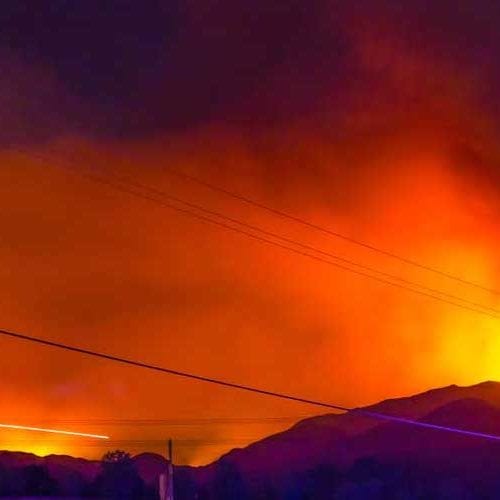A remote telecom tower in a desolate area in the hills

Staying Connected when Everything Is Forcing Us Apart
The severity of the COVID-19 pandemic has swiftly changed the world in which we live by drastically altering how we work and where we socialize. In just a few short weeks, it has transformed complex social systems, which were based on physical proximity and interaction, to ones based on remote connection, isolation and social distancing.
Offices, schools, factories, restaurants, retail outlets, and places of worship—the venues that define our lives—are shut indefinitely. Streets, which normally teem with vehicles, hawkers and pedestrians are deserted. The citizens of India have retreated into our homes due to an unprecedented lock-down aimed at slowing the spread of the Coronavirus through the country.
With no direct contact with the world around, telecom and internet services have become critical modes for information sharing with regards to government mandates, real-time medical updates, and in some states a direct line to information on availability of essential supplies and commodities.
Information Access during Crises
In times of emergency, such as now, telecom lines are the back-bone of life that continue to allow businesses to remain productive, senior citizens to call for health services, children to utilize distance-learning programs, and for contact-less payment systems to remain operational when withdrawing money from the bank is no longer possible.
It’s therefore reassuring that a majority of Indians have access to a smart phone. As the second largest cell phone market in the world, India has a subscriber base of more than 1.2 billion users, who on average use more than 9.8 GB of data per month, the highest of any country.
According to data from the Tower and Infrastructure Providers Association (TAIPA), data usage during the lockdown in India has surged more than 30 percent nationally, and in certain cities such as Bangalore and Hyderabad by 70 percent. In a country of 1.2 billion people, with internet penetration at only 31 percent, it is the telecom towers that are the foundation for last mile connectivity to the subscribers.
And while the telecom industry has experienced exponential growth and made impressive strides in offering reliable services over the past decade, the lock-down has revealed vulnerability in India’s telecom infrastructure that must be addressed to ensure uninterrupted operations in times of emergency so that this critical service does not falter or fail.
Telecom: An Essential Service?
While the Department of Telecom has classified the telecom sector as an essential service exempt from the lockdown, recent media reports reveal that restrictions on movement are affecting the ability to access telecom towers for basic maintenance and fuel logistics of diesel generators, which serve as the primary source of power.
Although the reliability of the electric grid in India has improved significantly, it is still erratic in many parts of the country. This is especially true for smaller cities and rural areas, and thus telecom operators have been reliant on diesel generators for supply of power.
While this has not been too much of an issue in the recent past, the pan-India lockdown has seen state borders sealed and supply chains interrupted. Mobile tower diesel demand may only constitute 1.54 percent of total consumption, but a domino effect has resulted in fuel stations across India rationing their supplies to vehicles offering “essential services”. The lack of clear directives on what constitutes “essential services” has left telecom operators uncertain of their ability to refuel generators.
Prioritizing Resilience
The global disruption caused by COVID-19 has forced us to evaluate existing systems to ensure they are resilient in the face of natural disasters and other calamities. In the case of the telecom sector, this means being able to keep the signal on when the power goes out.
The threat of high impact, low likelihood shocks transcends vulnerable geographies. Telecommunications play a central role in providing services to society, so a lasting disruption could be costly and catastrophic to communities while exacerbating and complicating recovery efforts. Because of their integration, the resilience of the electricity and telecommunications sectors is becoming a central issue. Strategic use of clean energy technology can increase resilience, preparedness, response and recovery from unpredictable and formidable natural and manmade shocks.
According to the TAIPA Report of 2018, utilizing sustainable sources of energy must become a priority for the telecom industry—not only to ensure uninterrupted service, but also to reduce the exponential energy costs which are 25 percent of total network operating costs. The report states that USD 400 million (INR 3,000 crore) per year can be saved in fuel costs if electricity supply is maintained at 20 hours per day. This would reduce the reliance on diesel as a power supply, resulting in reduction of carbon dioxide emissions by up to 2.75 million tons per annum.
Investing in Solutions
In the recent past, the industry has started adopting innovative methods such as passive infrastructure sharing, integrating renewable energy solutions including wind, solar and biomass to power its towers, converting 20 percent of the infrastructure to diesel-free sites, and installing high efficiency storage systems such as lithium-ion batteries that are compact and can be recharged quickly.
It is estimated that India would require more than 40 gigawatt-hours of energy storage to back up existing and outfit new towers with battery systems by 2025. These batteries present a source of demand for domestically manufactured technology under India’s Energy Storage Mission, and can help ensure that challenges with fuel logistics do not disrupt our nation’s ability to stay connected.
The current global situation presents a somber reminder of the necessity of resilience in all of our critical systems. It is unclear as to how long the pandemic will cause lockdowns and restrictions on the movement of people and goods. But it is clear that our need to be connected is invaluable and justifies investment in resilient systems and infrastructure to ensure that the device in our pockets remains a portal to the world.


